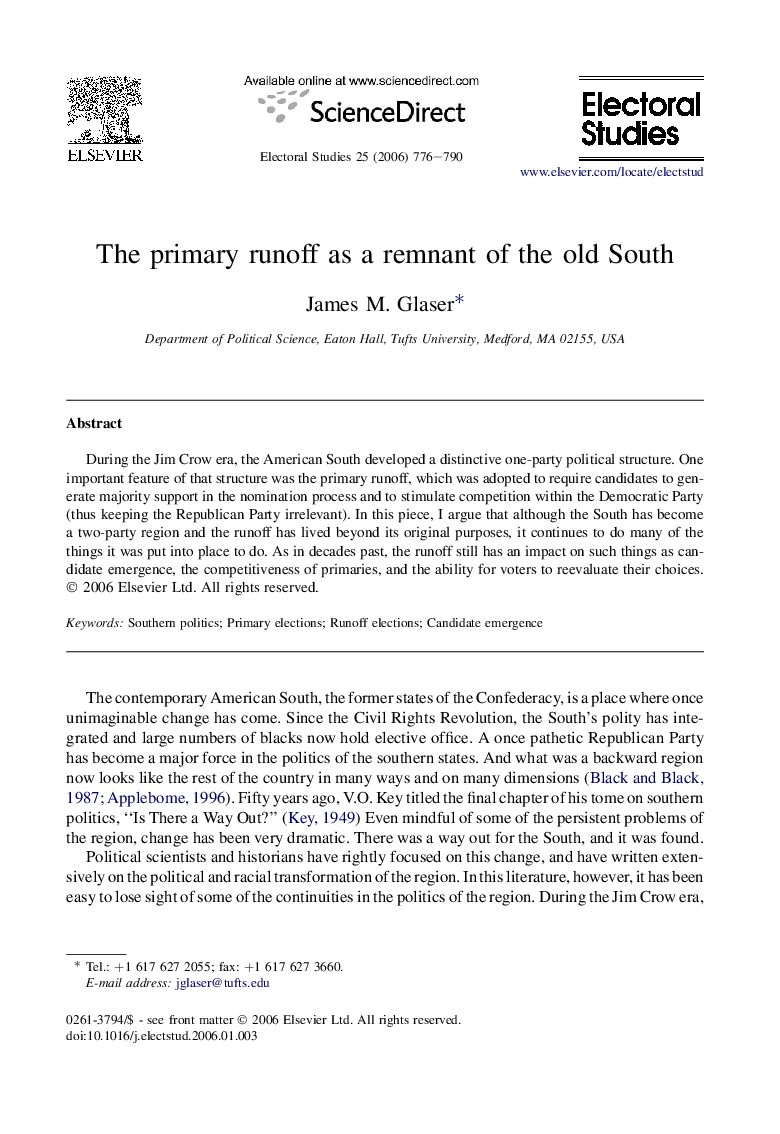| Article ID | Journal | Published Year | Pages | File Type |
|---|---|---|---|---|
| 1052524 | Electoral Studies | 2006 | 15 Pages |
Abstract
During the Jim Crow era, the American South developed a distinctive one-party political structure. One important feature of that structure was the primary runoff, which was adopted to require candidates to generate majority support in the nomination process and to stimulate competition within the Democratic Party (thus keeping the Republican Party irrelevant). In this piece, I argue that although the South has become a two-party region and the runoff has lived beyond its original purposes, it continues to do many of the things it was put into place to do. As in decades past, the runoff still has an impact on such things as candidate emergence, the competitiveness of primaries, and the ability for voters to reevaluate their choices.
Keywords
Related Topics
Social Sciences and Humanities
Social Sciences
Geography, Planning and Development
Authors
James M. Glaser,
